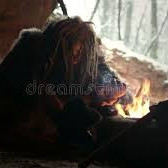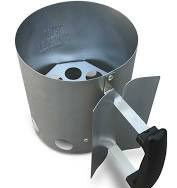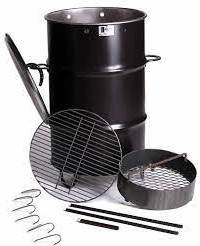Over the years I have bought, used, and thrown out many types and brands of barbecues. The best taste is a result of the richest smoke ring that’s infused deep into a cut of meat by meticulous trial and error, and of course, using the best charcoal wood smokers.
There have been a lot of different types of smokers that have entered the scene of late, all of which insist that they are the best, easiest, and of course the set-and-forget type of cookers. I have been barbecuing meats for over 40 years and can promise you that best is not the easiest and definitely not a set-and-forget system.
The following information was learned over many years and a boatload of delicious smoked barbecue.
Who First Started Smoking Meats

The majority of today’s practices can be traced back to a simpler time and with one main objective in mind, survival. One could surmise that the cave dweller era was one of strict survival practices. I have been on camping outings that the food that we brought along would have to be secured from the animals of the area. There is a host of animals today that seek out opportunity food that we humans pack around, not to mention the leftover scraps that we discard.
The cave dwellers had a similar problem but on a larger scale. I could imagine that a caveman or woman would have to bring their kill into the living space of the cave to secure it from the carnivorous beasts large and small. Then after the advent of fire, it was learned that the smoke from their heat source would actually preserve the meats for a longer period of time and add a familiar and tasty, smoky flavor as well.
Different Fuels for Smoking Meat
Smokers are designed to use a variety of fuels, including wood, charcoal, electricity, propane or natural gas, and pellets. The person preparing this awesome meal needs to keep a constant temperature and flow of smoke across the meat. There must be smoke. The traditional smokers burn wood to create both heat and smoke to cook your food.
An electric smoker uses an electric heating element that heats circulating air around the food chamber. The hot air tends to dry out the meat and a water reservoir needs to be utilized to prevent this dehydration from affecting the meat. There is a wood chip tray located near the heat source to add the wood smoke flavor to your food.
Wood pellets have become popular to enable some of the higher-priced units to achieve a constant temperature by automatically adding the pellets to the fire chamber. You would fill a hopper with pellets, light your unit and an auger would automatically move pellets from the hopper to the fire chamber according to the temperature you set it for. I am not a fan of pellets because I can not be sure of the composition or origination of the product.
Propane smokers work a lot like the electric version in that water must be added to keep your food moist. You are just trading off using a different heat source.
Wood Chips or Wood Chunks
Different Types of wood will add different smoky flavors to your meals. There are many varieties to choose from and my best advice is to try them all over time. When a person is smoking a smaller piece of meat they may not need as much smoke flavor to satisfy their pallet. A wood chip may do the job just fine. It will produce a quicker burst of smoke for a shorter span of time. One may also need to add chips more often.
Chunks of wood will work better for larger cuts of meat that need a longer cook time and will produce more smoke over a longer period of time. Play with it and find what best brings you the results with taste and texture that suits you.
Lump Charcoal or Briquettes

If any of you have just started down that delicious barbecue trail, then you may or may not have heard about using Lump Charcoal over the more common Briquettes. There may even be a few of you that did not know that you even had a choice and thought that the smaller briquettes were all that there was in the line of charcoal.
Well, now you know, and here is the difference:
Briquettes-
Briquettes are mainly made from discarded construction debris, wood chips, fragments, and sawdust. This discarded wood is burnt at no to low oxygen levels in a special kiln where all the sap, moisture, and gases are stripped away at high temperatures. What is left is carbon which is ground up to a fine dust then mixed with a starchy liquid solution, making a black, moist malleable substance that can be molded and dried into the briquettes.
Certain additives are used such as borax, starch, limestone, wood pulp, and sodium borate to help form and cause the dust to bind into clumps that can be formed in a mold. This mixture tends to stick to the molds and some of those additives are used to help the briquettes separate from the molds. Sawdust is added to assist in the lighting of your barbecue and keep it burning at a constant rate. I have seen some briquettes that have smaller chips of wood added to the mixture, as in hickory, for additional flavor.
Lumps-
These carbon nuggets are just that, carbon with no additives. Unadulterated charcoal that I guess you could classify as the organic choice for your barbecuing awesomeness. I am sure that some of you have tasted that after taste in your food after using that easy light stuff. I know I have and I did not like it.
The not knowing part is as bad as the taste. So, lump charcoal is going to be used by the serious barby smoker and is used for any cut of meat and will deliver more sustainable heat for a longer time, naturally. No chemical residue, or after taste. My personal choice. I have come across a video that compares different brands of Lump Charcoal
Lighter Fluid or The Chimney

I have used the lighter fluid before and if you are in a hurry to get some hotdogs and burgers started on the grill then it can be useful. Like anything else though, I would not use it on a consistent basis solely on the fact that it will leave a residue on your food, and who knows what will come out years from now as to what effects it may have on the human body over time. I keep a can around for re-lighting problems and it will last me forever.
With a chimney, you are getting the full experience of the most used process by experienced barbecuers, not to mention the quickest and best way to get an even burn on your charcoal from the start. I use the waxed straw bunches to light the charcoal from the bottom of the chimney and in 15 to 20 minutes you are ready to start cooking.
The Smoker of Choice

I have used a lot of different kinds of grills, barbecues, and smokers. My son, Anthony, and I have grilled on everything from a stick over an open fire to a hibachi to standard grills and inevitably to a few different types of smokers. The one that stands out that provided the best experience and immersion into the barbecue culture as a whole has to be the Pit Barrel Smoker, hands down.
For the money, you are not going to beat the simplicity of the Pit Barrel and the true awesome original flavor of smoked meat. Just a warning here: You will be asked by family and friends to attend their backyard barbecues, but only if you bring your barrel!!!

Thanks for suggesting a wood chip as a good alternative for smoking smaller pieces of meat and without needing as much smoky flavor for the desired pallet! Even though civilization has made most people turn their backs on the traditional cooking style, the smoky flavor this adds to their meals has been lost completely. No amount of wealth or civilization should make us derail from getting the natural flavor that traditional cooking can add to our meal. Thanks for the informative
post!
Thank you for your comments about that unique smoky flavor. I believe there has been a recurrence of interest as well as practice concerning the art of smoking meats and is growing by lumps and barbecues.